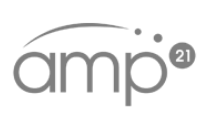Are you looking for a world-class social justice application
of algebra that your students can understand and use in situations they see
going on around them, in stories online and on tv?
The world’s leading humanitarian organization, United Nations
World Food Programme (WFP), was the 2020 Nobel Peace Prize Laureate and 2021
Edelman Prize winner for the most creative and impactful application of
Mathematical Modeling and Data Analytics. WFP is saving and changing lives by
delivering food assistance in emergencies and working with communities to
improve nutrition and build resilience. While working to reach their ultimate
goal of zero hunger, WFP assisted nearly 100 million people across 88 countries
in 2020. Analytics has supported WFP’s management of its vast and complex
humanitarian operations, helping it reach more people, respond faster in emergencies,
and realize significant savings that are used to improve lives and empower
communities.
In this installment, we provide access to:
- For the classroom: How systems
of inequalities are more valuable than equations in teaching - The REAL “real world” description
of the humanitarian effort to achieve zero hunger - In search of the Golden
Nugget: A technical paper regarding the mathematical modeling utilized by
the UN WFP - In His Own Words: Koen
Peters, Head of Development for Supply Chain Planning & Optimization and
developer of the mathematical modeling effort utilized by WFP, is featured
on Resoundingly Human podcast - And the Winner Is: United Nations World Food Programme video
of its Edelman Competition Presentation
For The Classroom: Systems vs.
Equations
In my previous blog, I challenged math educators to remove
absurd examples that use simultaneous equations to find answers for things that
could be simply counted. Needless to say, I was chagrined but not surprised
when I read a recent math education article that used the “classic” example of
a farmer who counted the number of heads and feet on the pigs and chickens in
the barnyard. I envisioned the farmer lying on the ground with his sight
obscured, trying to count and keep track of the animal legs in the yard.
Imagine the farmer’s consternation when the leg count was an odd number. What
was he to do? Start counting over! Or look for the animal with a missing limb.
I guess this problem is supposed to show that algebra is relevant to
agriculture.
I countered with a product planning example in which all
resources must be used to produce two different products. The “must use all”
requirement creates a system of “equations.” In the literature of actual linear
programming case studies, inequalities play a much more significant role than
equations. Limited resources are often represented as upper bound constraints
and lower bound inequality constraints that define minimum requirements. To see
high school level examples of meaningful systems of inequalities, download a free sample of
Mathematical Modeling with Algebra, a textbook designed to resonate with
high school students’ interests and demonstrate the broad applicability of
mathematics.
Humanitarian
Operations and Analytics
ORMS Today is a professional magazine published by INFORMS,
carrying stories about math modeling projects with broad current interest
written in a straightforward, approachable manner. The UN World Food Programme
was featured in the June 4,
2021 issue. The article highlights the tools and partnerships developed to
strive toward their Zero Hunger goal amid a global pandemic.
In search
of the Golden Nugget
Not all high-brow, dry, technical papers should be
automatically dismissed when considering material for classroom use. This paper,
The
Nutritious Supply Chain: Optimizing Humanitarian Food Assistance, published
in INFORMS Journal on Optimization Vol. 3, No. 2,
discusses the mathematical modeling example used by WFP to reach across 80
countries to provide approximately 90 million people with food. To understand
the entire paper, you would need an advanced background in mathematical
modeling. However, high school teachers can use the algebraic representations on
pages 218-224 of the article to illustrate real-world systems of inequalities.
These pages provide examples of lower bound constraints on the nutritional
content of food baskets and upper bound constraints on available food supplies.
In His
Own Words
Koen Peters,
Head of Development for Supply Chain Planning & Optimization at World Food
Programme, leader of the UN WFP mathematical modeling effort, and TEDx speaker
was interviewed earlier this year by INFORMS’ Ashley Kilgore
for her podcast Resoundingly
Human. Tune in to hear Koen’s perspective on the vital work the WFP team is
doing, the role analytics plays in this humanitarian effort, and the honor of
being considered for the 2021 Edelman Award.
And the
Winner Is
As part of the competition for the 2021 Edelman Prize, the
UN WFP team produced this
compelling presentation video. The exhibit highlights the challenges faced,
the strategies used, the overall impact, and WFP’s continuing use of analytics.
Koen briefly discusses the actual math model used at minute 13 of the video. How
can you imagine using it in your classroom?
As you can see, there can and should be more than “math for
math’s sake” in the classroom. As teachers, we have endless possibilities to
engage and challenge our students with examples of problems they will find
compelling.

